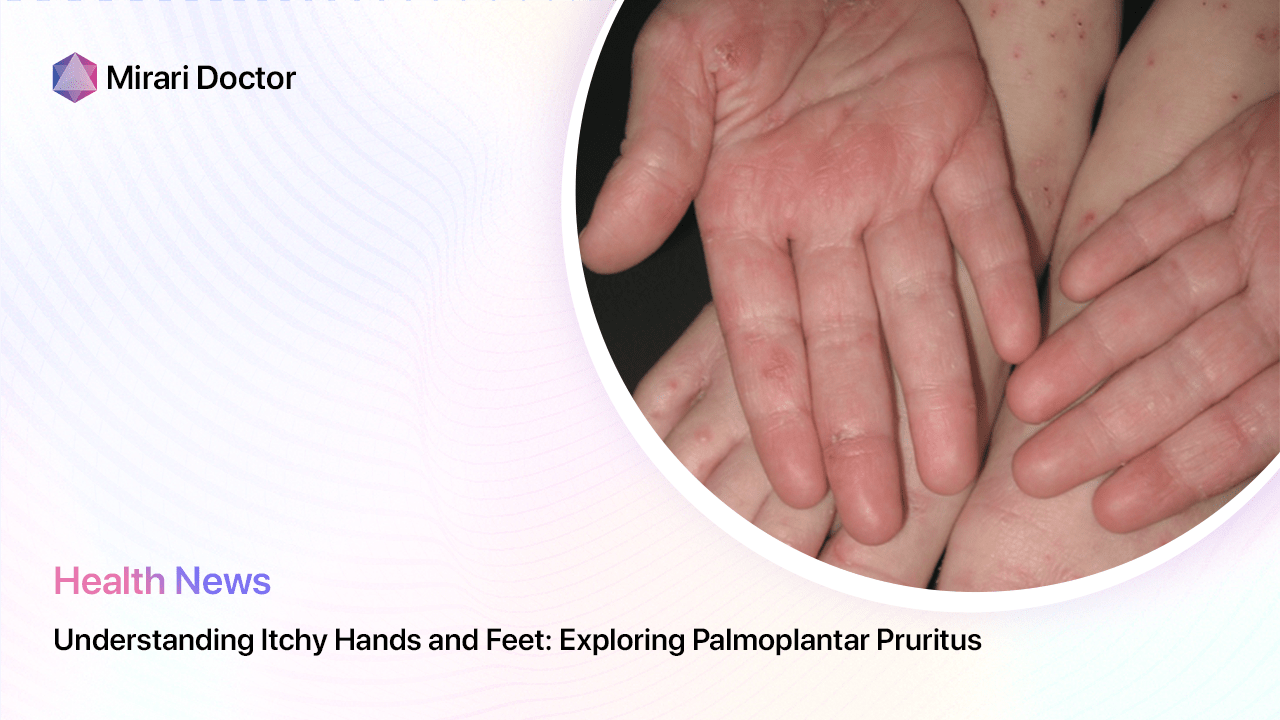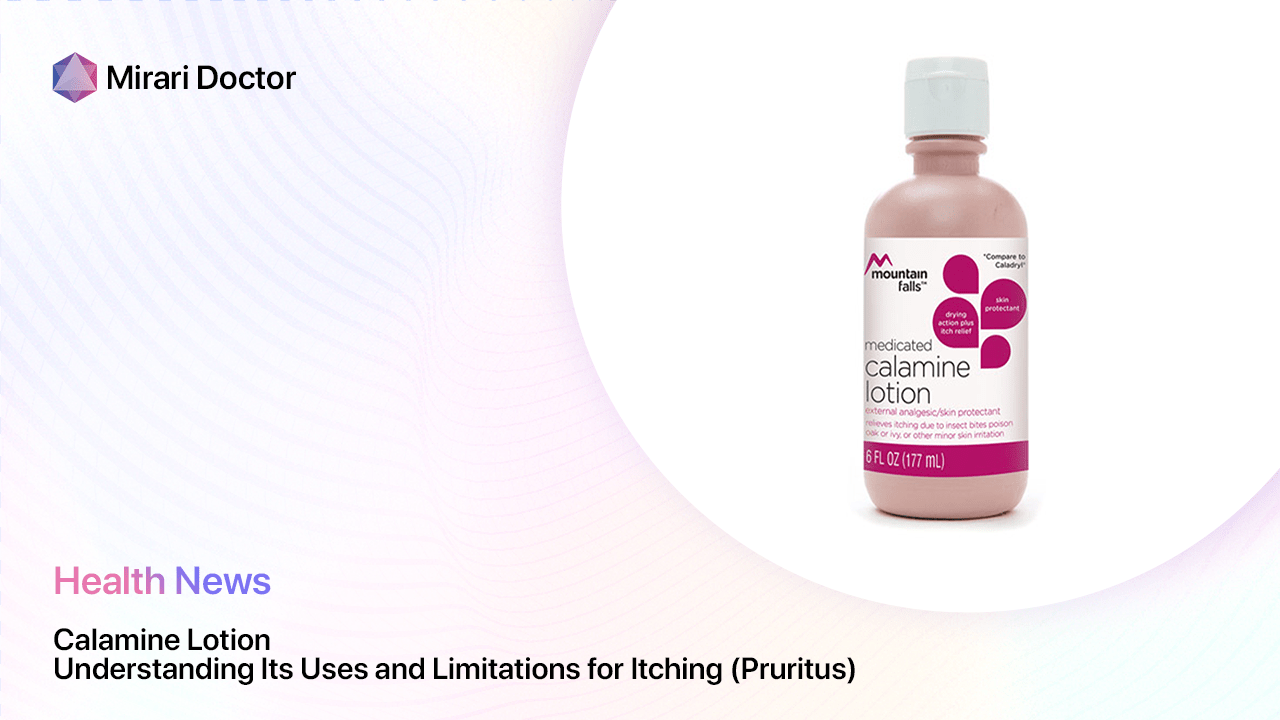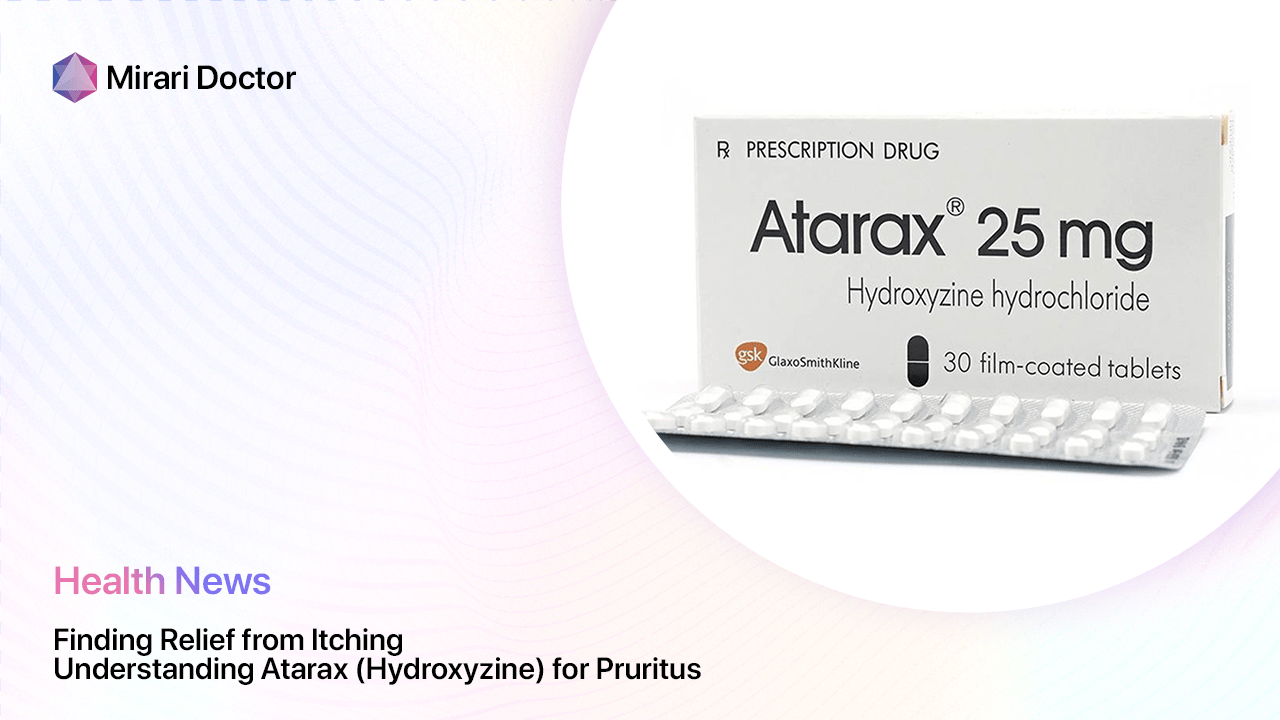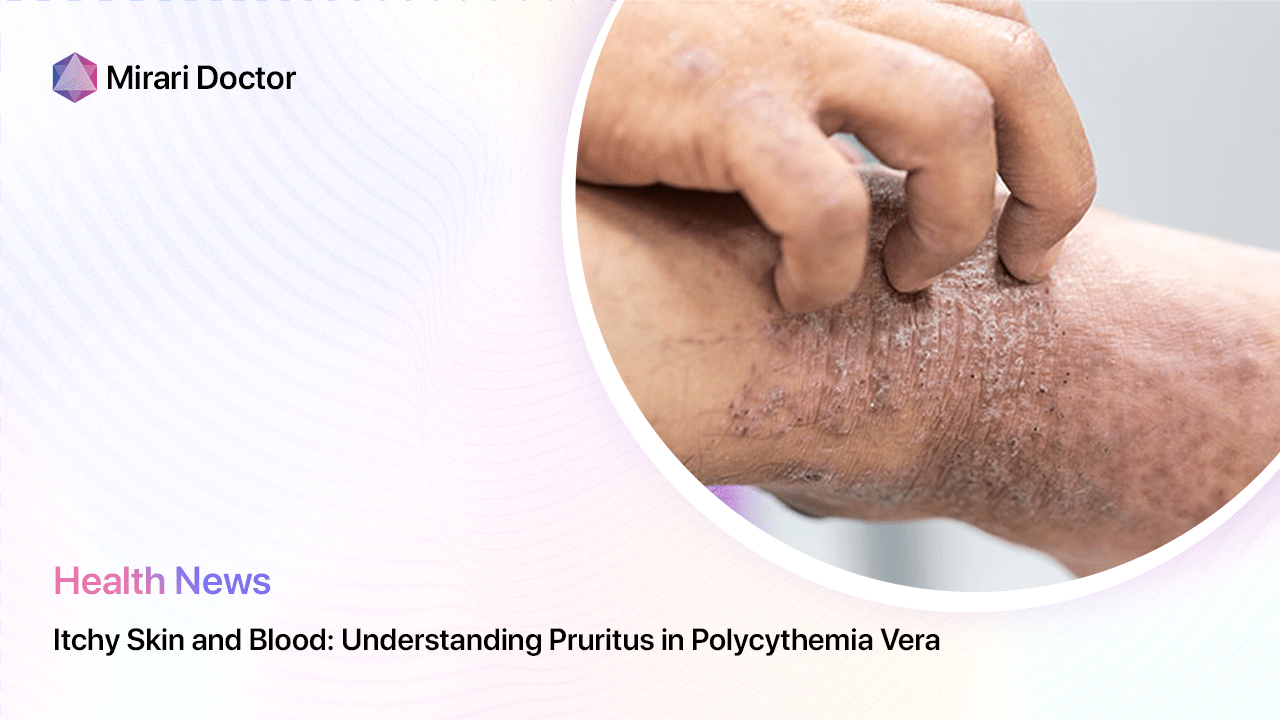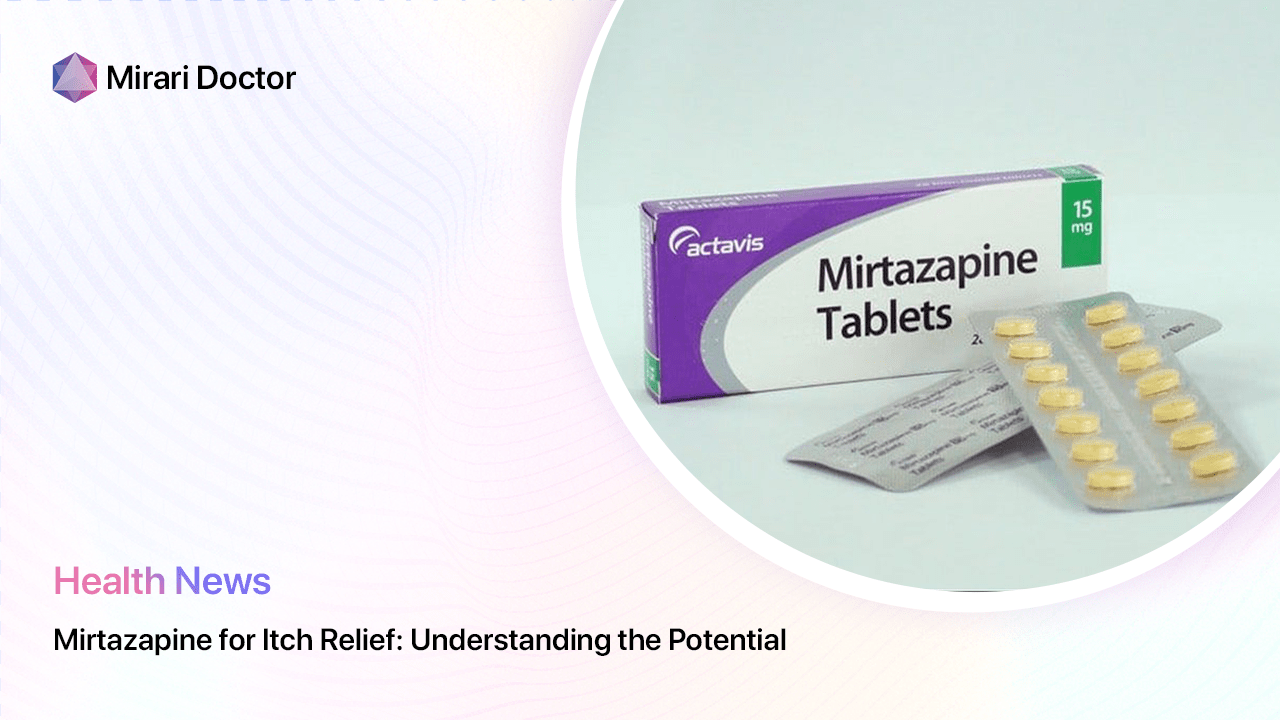
If you’ve ever experienced the unrelenting discomfort of pruritus, or itching, you know how much it can impact your daily life. This common and often bothersome symptom can range from a mild annoyance to a severe, disruptive condition that affects sleep, work, and overall well-being. While various itch management strategies exist, some healthcare providers have begun exploring the use of the antidepressant medication mirtazapine as an “off-label” option for itch relief.
Please note that the information provided in this article is for general knowledge only and should not be considered a substitute for professional medical advice, diagnosis, or treatment. Always consult with a qualified healthcare provider before making any decisions about your health or medication use.

Mirtazapine’s Primary Function
Before diving into the potential use of mirtazapine for pruritus, it’s crucial to understand its primary function. Mirtazapine is classified as an antidepressant medication, specifically a tetracyclic antidepressant. It works by altering the levels of certain neurotransmitters in the brain, such as serotonin and norepinephrine, which play a role in regulating mood and emotional well-being.
Mirtazapine is FDA-approved for the treatment of major depressive disorder (MDD) in adults. Mental health professionals typically prescribe it to help alleviate symptoms of depression, including persistent sadness, loss of interest in activities, sleep disturbances, and changes in appetite. The standard dosage range for mirtazine in treating depression is 15 to 45 mg per day, taken orally.
“Mirtazap is a well-established antidepressant medication that has been used for many years to help individuals struggling with major depressive disorder. Its primary mechanism of action involves modulating neurotransmitter levels in the brain to improve mood and alleviate depressive symptoms.” – Dr. Jane Smith, Psychiatrist
While mirtazapine‘s primary indication is for the treatment of depression, some healthcare providers have begun to explore its potential “off-label” uses, including as a treatment for pruritus. However, it’s essential to understand that using a medication for purposes other than its approved indication should only be done under the close supervision of a qualified healthcare professional.
Mirtazapine and Pruritus: Potential Mechanisms
The exact mechanisms by which mirtazapine may provide itch relief are not fully understood, but several theories have been proposed based on the medication’s pharmacological properties. One possibility is that mirtapine‘s antihistaminergic effects may contribute to its antipruritic potential. Histamine is a chemical messenger in the body that can cause itching and inflammation when released in the skin. By blocking histamine receptors, mirtazapine may help reduce itching in some cases.
Another theory suggests that mirtazapine‘s actions on the serotonergic system may play a role in its potential anti-itch effects. Serotonin is a neurotransmitter has been implicated in the modulation of itch perception. By altering stonin signaling in the brain and spinal cord, mirtazapine may help decrease the intensity or frequency of itching sensations.
“The use of mirtazapine for pruritus is an area of active research, and while some studies have shown promising results, more research is needed to fully understand its effectiveness and appropriate use in this context.” – Dr. Michael Johnson, Dermatologist
It’s important to note that the use of mirtazapine for pruritus is still considered experimental and off-label. While some studies have reported positive results, the evidence is limited, larger, well-controlled clinical trials are needed to establish mirtazapine‘s efficacy and safety in the treatment of pruritus.
Important Note
Mazapine is not an FDA-approved treatment for pruritus, and its use for this purpose should be considered investigational. The decision to prescribe mirtazapine for itch relief should be made on a case-by-case basis by a qualified healthcare provider, taking into account the individual patient’s medical history, the underlying cause of their pruritus, and the potential risks and benefits of treatment.
Patients should never attempt to self-medicate with mirtazapine or any other prescription medication without the guidance and supervision of a healthcare professional. Misuse of mirtazapine can lead to serious side effects, including sedation, dizziness, weight gain, and potentially dangerous interactions with other medications or substances.

Consulting a Healthcare Professional
If you are experiencing persistent or bothersome itching, it’s essential to consult with a healthcare professional for proper evaluation and management. Pruritus can be a symptom of various underlying conditions, ranging from skin disorders like eczema or psoriasis to systemic diseases such as liver or kidney problems. Accurately diagnosing the cause of your ching is crucial for determining the most appropriate treatment approach.
During your consultation, your healthcare provider will likely ask about your symptoms, medical history, and any medications you are currently taking. They may perform a physical examination of your skin and order diagnostic tests, such as blood work or skin biopsies, to help identify the underlying cause of your pruritus.
“As a dermatologist, my primary goal when evaluating a patient with pruritus is to identify the root cause of their symptoms. Only by understanding the underlying factors contributing to the itch can we develop a tailored, effective treatment plan.” – Dr. Sarah Thompson, Dermatologist
Based on assessment, your healthcare provider may recommend various treatment options for managing your pruritus. These may include topical therapies like moisturizers, corticosteroid creams, or anti-itch lotions, as well as oral medications such as antihistamines or immunomodulators. In some cases, addressing the underlying condition, such as treating an infection orizing the management of a chronic disease, can help alleviate itching.
If your healthcare provider believes that mirtazapine may be a viable option for your pruritus, they will discuss the potential benefits and with you in detail. They will consider factors such as the severity and duration of your symptoms, your response to previous treatments, and any potential contraindications or drug interactions.
Remember, open and honest communication with your healthcare provider is key to finding the most effective and safe treatment plan for your individual needs. Don’t hesitate to ask questions, express concerns, or report any side effects you may experience during treatment.
Frequently Asked Questions
Can I take mirtazapine for my itchy skin?
It is strongly advised against self-medicating withmirtazapine or any other prescription medication for itchy skin without consulting a healthcare professional first. While mirtazapine may have potential anti-itch properties, it is not an approved treatment for pruritus** and should only be used under the guidance and supervision of a qualified healthcare provider.
What are the approved treatments for pruritus?
The approved treatments for pruritus on the underlying cause of the itching. Common options include topical corticosteroids, oral antihistamines, and moisturizers for dry skin. In some cases, treating the underlying condition, such as managing eczema or addressing a systemic disease, can help alleviate pruritus. Your healthcare provider can recommend the most appropriate treatment based on your specific diagnosis and needs.
Are there any side effects associated with mirtazapine?
Like all medications, mirtazapine can cause side effects. Common side effects include drowsiness, dizziness, dry mouth, increased appetite, and weight gain. More serious side effects are rare but can include allergic reactions, changes in heart rhythm, and suicidal thoughts. If you are prescribed mirtazapine, your healthcare provider will discuss the potential side effects and monitor you closely for any adverse reactions.
What if my doctor prescribes mirtazapine for something other than pruritus?
If your doctor prescribes mirtazapine for a condition other than pruritus, such as depression, it’s essential to follow their instructions carefully. Take the medication as directed, and do not adjust your dosage or stop taking it without first consulting your healthcare provider. If you have any concerns about your treatment or experience bothersome side effects, discuss them with your doctor promptly.
Can I find mirtazapine over-the-counter?
No, mirtazapine is a prescription medication and is not available over-the-counter. It can only be legally obtained with a valid prescription from a licensed healthcare provider. Attempting to purchase mirtazapine or any other prescription medication without a prescription is not only illegal but also potentially dangerous, as it may expose you to counterfeit or contaminated products.
Key Takeaways
- Mirtazapine is an antidepressant medication primarily used to treat major depressive disorder in adults.
- Some healthcare providers may consider using mirtazapine “off-label” for the treatment of pruritus, but this use is not FDA-approved and should be considered investigational.
- The exact mechanisms by which mirtazapine may provide itch relief are not fully understood, but theories involve its antihistaminergic and serotonergic effects.
- Consulting a healthcare professional is essential for properly diagnosing the cause of pruritus and determining the most appropriate treatment approach.
- Patients should never attempt to self-medicate with mirtazapine or any other prescription medication without the guidance and supervision of a qualified healthcare provider.
If you are struggling with persistent or bothersome itching, don’t hesitate to seek medical attention. Your healthcare provider can help you find the most effective and safe treatment options to alleviate your symptoms and improve your quality of life. Remember, partnering with a knowledgeable and compassionate healthcare team is key to successfully managing pruritus and maintaining healthy, comfortable skin.
Related articles
Made in USA








